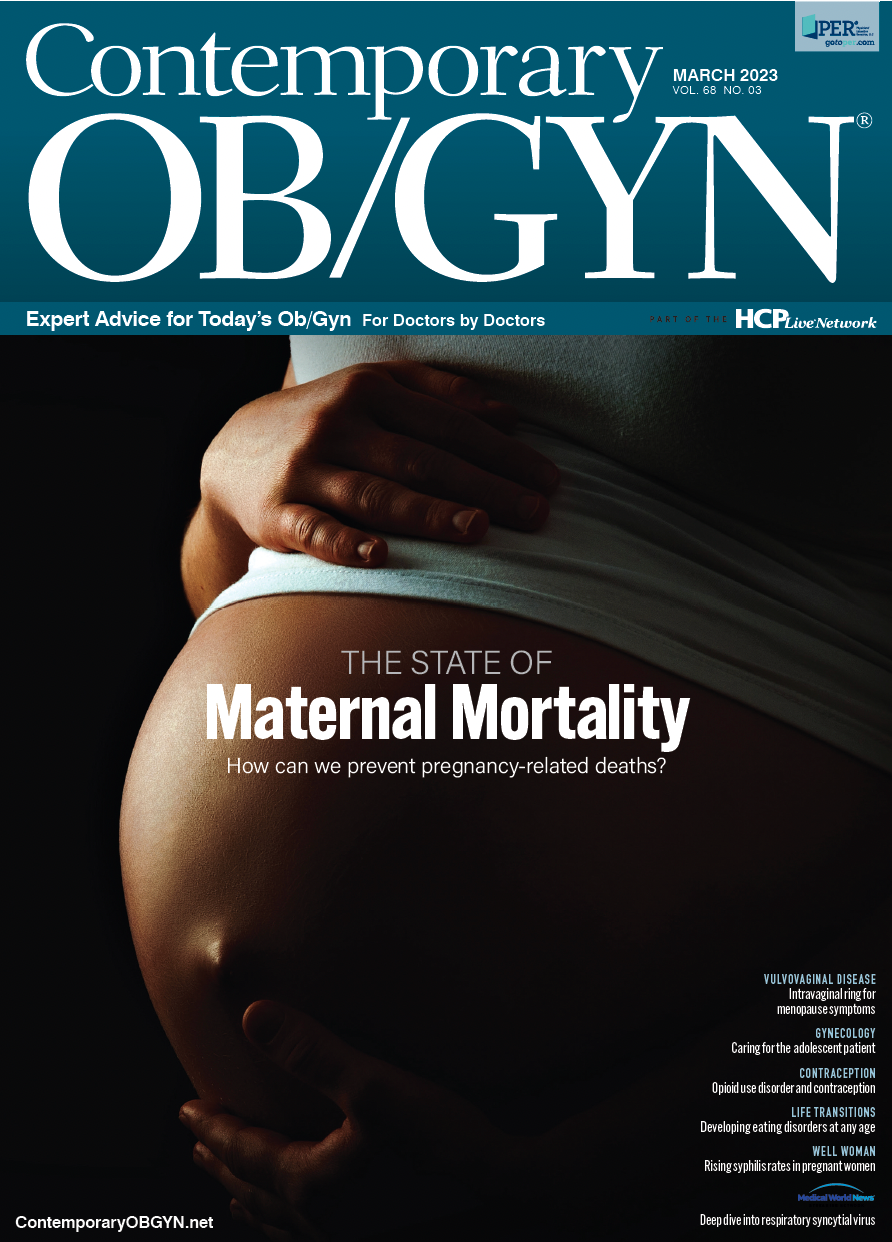Daré Bioscience announces positive data on intravaginal ring for vasomotor and vaginal menopause symptoms
If approved, DARE-HRT1 would become the first FDA-approved monthly intravaginal ring to deliver both estrogen and progestin hormone therapy.
Daré Bioscience recently announced topline results from its phase ½ clinical trial of DARE-HRT1—an investigational intravaginal ring designed to deliver combination estrogen and progestogen hormone therapy over a 28-day period—for the management of vasomotor and vaginal symptoms of menopause.
The intravaginal ring is designed to continuously deliver bioidentical 17β-estradiol and bio-identical progesterone for 28 days. The product’s technology uses a solid ethylene vinyl acetate polymer matrix to release more than 1 active ingredient without the need for a membrane or reservoir—typically required to house the active drugs and control dosing—allowing for consistent dosing and sustained delivery.1
“The delivery of hormone therapy over a 12-week study via a 28-day intravaginal ring which requires no daily intervention supports DARE-HRT1’s potential to be a first-in-category option, offering ease-of-use and consistent dosing to women suffering from menopausal symptoms,” said Daré Bioscience medical director Annie Thurman, MD.
If approved, DARE-HRT1 would become the first FDA-approved monthly intravaginal ring to deliver both estrogen and progestin hormone therapy.
The randomized, open-label phase ½ study evaluated DARE-HRT1 for safety, pharmacokinetics, and preliminary efficacy in improving vasomotor and vaginal symptoms of menopause in 20 healthy postmenopausal women aged 51 to 65 years with intact uteri over 3 consecutive months.
They utilized 2 different dose combinations (estradiol 80 µg/progesterone 4 mg IVR and estradiol 160 µg/progesterone 8 mg IVR) over 12 weeks of use to even further asses safety, tolerability, and pharmacokinetics.
To calculate targets for hormone therapy, researchers reviewed the pharmacokinetics levels of currently available products with FDA approval to treat both vasomotor and vaginal symptoms of menopause. Results indicated that the levels of estradiol in both doses achieved or exceeded these established target levels. Progesterone levels in both doses proved successful as well, meeting the objective of releasing progesterone.
According to the study results, the levels of estradiol in both the lower and higher dose formulation of DARE-HRT1 achieved statistically significant improvement in vasomotor and genitourinary symptoms of menopause, as well as vaginal pH and maturation index.
Researchers also found significant reductions in menopausal symptoms—including hot flashes and night sweats—among both DARE-HRT1 dose groups when compared to baseline. Participants showed significant improvements from baseline in all aspects surveyed on the Menopausal Quality of Life Survey, which expand beyond the parameters of vasomotor symptoms to the physical, psychosocial and sexual symptoms associated with menopause (p<0.01 on all domains). Compared to baseline, all participants showed significantly reduced vaginal pH (p<0.01), increased superficial vaginal cells, increases in intermediate cells, and decreased parabasal cells.
Vaginal dryness was reported by 70% of participants and was significantly improved in both DARE-HRT1 groups (p<0.01). This same subset of women also experienced significant decreases in vaginal pain after usage. The most common adverse events included those found with other vaginal products.
All women said that DARE-HRT1 was comfortable to wear and did not come out during use. Over 94% also said they would be either somewhat or very likely to use the IVR for a women’s health condition or unrelated disease in the future if needed.
The company also announced plans to advance DARE-HRT1 into a single phase 3 clinical trial to support a new drug application for DARE-HRT1 for the treatment of moderate-to-severe vasomotor symptoms in menopausal women with intact uteri.
Reference
Daré Bioscience Announces Positive Pharmacokinetic (PK) Results from the DARE-HRT1 Phase 1 / 2 Study that Support the Potential of DARE-HRT1 as an Effective Hormone Therapy for both Vasomotor and Vaginal Symptoms of Menopause | Daré Bioscience. Daré Bioscience. Published 2023. Accessed January 16, 2023. https://ir.darebioscience.com/news-releases/news-release-details/dare-bioscience-announces-positive-pharmacokinetic-pk-results

Low creatinine-to-cystatin C ratio linked to postmenopausal muscle loss
March 20th 2025A new study finds that postmenopausal women with a reduced creatinine-to-cystatin C ratio experience decreased muscle volume and slower walking speed, highlighting its role as a potential biomarker for muscle health.
Read More
